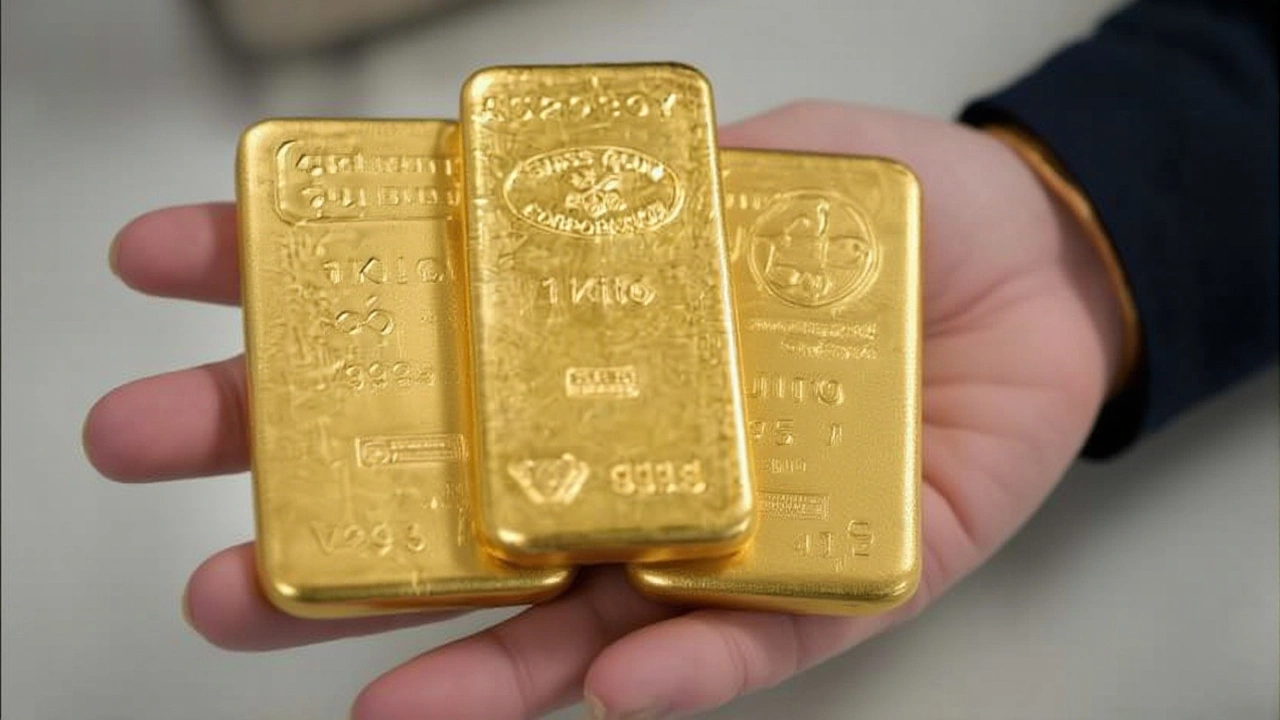On October 7, 2025, gold surged past the $4,000‑per‑ounce mark for the first time in recorded history, a milestone noted by Swann Collins, investor, writer, and consultant for Eurasia Business News in an article published that day.
The metal hit an intraday high of $4,006 per ounce before slipping to $3,980 and later re‑establishing the $4,000 level. That 50% year‑to‑date gain dwarfs the 25% rally of 2020 and marks the strongest 12‑month performance since 1979.
Historical Context
Gold’s previous all‑time high was $2,075 per ounce in August 2020, reached amid pandemic‑driven uncertainty. Since then, the precious metal has been on a steady climb, but nothing hinted at a double‑digit breach. The last time investors saw a comparable surge was during the 2007‑2009 financial crisis, when safe‑haven buying lifted prices by roughly 24%.
Key Drivers of the Surge
- U.S. federal government shutdown ongoing as of October 2025, stoking fear of fiscal instability.
- Inflation running at 2.9%, about 0.9 percentage points above the Federal Reserve’s 2% target.
- U.S. dollar weakened roughly 10% year‑to‑date against major currencies.
- Escalating geopolitical tensions across Europe, the Middle East, and East Asia.
- Anticipation of additional Fed rate cuts at the upcoming Federal Open Market Committee meetingWashington, D.C..
Central‑bank buying amplified the move. The World Gold Council reported that central banks purchased 415 metric tons in the first half of 2025, up from 385 tons the year before.
China’s People's Bank of China added gold for the 11th straight month, a policy shift anchored in Beijing’s desire to diversify reserves amid a weaker yuan.
Market Reactions
Analysts at Chronicle Journal warned that technical indicators now show "extreme overbought" conditions, suggesting near‑term volatility could spike even as the macro backdrop stays bullish for the metal.
Retail investors, spurred by social‑media buzz, flooded online broker platforms, while institutional money poured in through ETFs and sovereign wealth funds.
Impact on Mining Companies and Portfolio Managers
Mining firms such as Newmont and Barrick are projected to see profit‑margin expansions, with analysts at Money.mymotherlode.com forecasting earnings uplift of up to 15% for the 2025 fiscal year.
Portfolio managers at major asset managers—BlackRock, Vanguard, and State Street Global Advisors—have begun rebalancing client holdings, boosting precious‑metals allocations as a defensive hedge.
Future Outlook
Looking ahead, the World Gold Council predicts that if geopolitical tensions intensify or the U.S. shutdown drags on, gold could test $4,200 per ounce before year‑end. The next Federal Open Market Committee meetingWashington, D.C.—led by Jerome Powell, Chair of the Federal Reserve—will be a crucial catalyst. Should the Fed signal a pause or reversal on rate cuts, the rally could stall; a surprise hike would likely send gold soaring even higher.
For now, investors appear to be betting on gold’s role as a "debasement trade" against a dollar that many fear could lose value across the next 12 months.
Frequently Asked Questions
Why did gold break $4,000 on October 7, 2025?
A perfect storm of factors—U.S. government shutdown, inflation above the Fed’s 2% target, a 10% YTD dollar decline, and aggressive central‑bank buying, especially by the People's Bank of China—pushed investors into gold, driving the price past $4,000 for the first time.
Which investors are most affected by the surge?
Both retail traders and institutional funds have felt the impact. Retail platforms reported record inflows into gold ETFs, while asset managers like BlackRock, Vanguard, and State Street are increasing allocations to protect client portfolios.
How does the surge compare to past gold rallies?
The 50% YTD gain tops the 25% rally of 2020 and the 24% rebound after the 2008 financial crisis. It’s the strongest annual performance since the post‑Bretton Woods era of the late 1970s.
What role does the World Gold Council play in this story?
The World Gold Council tracks global gold demand and supply. Its data shows central banks bought 415 metric tons in the first half of 2025, a key driver behind the price spike.
What could happen to gold prices after the Oct. 28‑29 FOMC meeting?
If the Fed signals further rate cuts, gold may keep climbing toward $4,200. Conversely, a surprise rate hike or resolution of the U.S. shutdown could temper the rally and introduce short‑term volatility.







